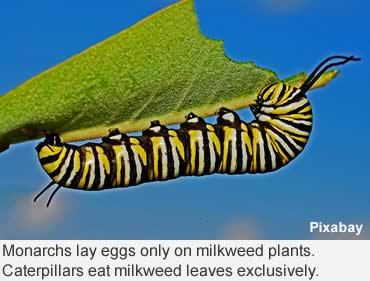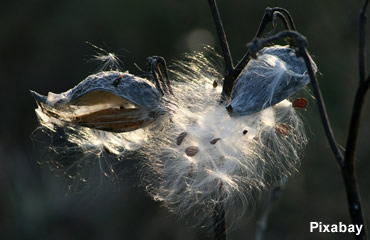This fall, volunteers are working all along Nebraska’s Cowboy Trial’s right of way, busily planting 10,000 milkweed seedlings.
The task, sponsored by the Nebraska Game and Parks Commission, is a unique effort and one of several created after significant population declines in Monarch butterflies have been studied the past several years.
One of the primary reasons for the Monarch’s decline is the lack of milkweed plants, which are critical in the life cycle of the monarch. Eggs are laid only on milkweed plants, and caterpillars eat milkweed leaves exclusively.
This year, planting operations began Sept. 21 for milkweed seedlings which were provided by the University of Kansas’ Monarch Watch program. Planting crews come from Game and Parks staff and AmeriCorps National Civilian Community. Their efforts conclude Nov. 1.
“By 2018, we will have planted more than 40,000 milkweed seedlings and restored more than 1,000 acres of native prairies,” according to Michelle Stryker, Game and Parks planning and programming division administrator. “This is truly a benefit to the Cowboy Trail, Nebraska’s state parks and butterfly conservation in our state.”
 The planting effort coincides with one of the greatest natural wonders of migration, as masses of colorful monarchs flutter by on their way to their over-wintering grounds in Mexico.
The planting effort coincides with one of the greatest natural wonders of migration, as masses of colorful monarchs flutter by on their way to their over-wintering grounds in Mexico.
Monarchs travel up to 3,000 miles every year, and they are also the only butterflies to make such a long, two way trip every year. Theirs is a type of migration most often observed with birds or whales, but unlike birds and whales, each butterfly only makes the trip once. Their children’s grandchildren make the return trips in fall.
Keeping this important pollinator healthy and self-sustaining remains of interest throughout its North American range.
“Current research suggests that to prevent further declines of the monarch, more than a billion milkweed plants and millions of acres containing diverse pollinator-friendly plants must be added to the landscape across the Midwest,” said Kristal Stoner, Game and Parks’ wildlife diversity program manager.
That’s a lot of seedlings and a lot of planting.
 It’s also why landowners are being asked to consider planting areas of pasture, farm or backyard where milkweed and other flowers can thrive for monarchs and other pollinators. Information on pollinator-friendly habitat can be entered the information into the Milkweed Tracker.
It’s also why landowners are being asked to consider planting areas of pasture, farm or backyard where milkweed and other flowers can thrive for monarchs and other pollinators. Information on pollinator-friendly habitat can be entered the information into the Milkweed Tracker.
Game and Parks encourages members of the public to record any plantings of milkweed into the Monarch Tracker, which is available on the Game and Parks website.
The map information will assist Game and Parks identify areas where milkweed and other pollinator-friendly flora can be planted, restored or enhanced in the next several years.
Resources: Nebraska Game and Parks